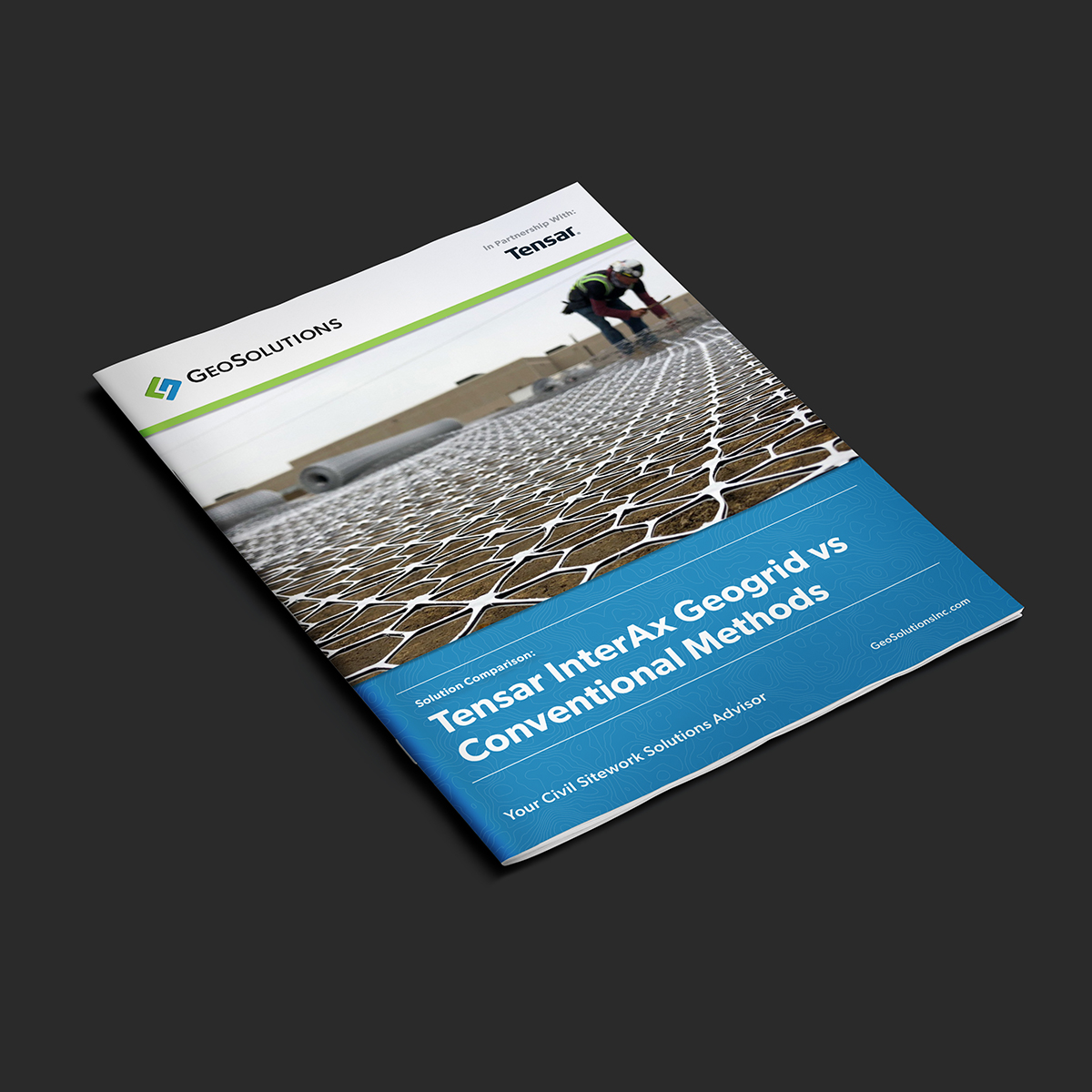
Waterproofing & Reflective Cracking Mitigation with Asphalt Interlayers
Over time, as pavements age and are subject to heavy traffic loads and extreme weather conditions, pavement distress begins to accumulate. This distress can include potholes, rutting, and cracking, requiring the need for maintenance or rehabilitation to prevent premature pavement failure. However, the existing cracks are one of the biggest threats to the future performance of the pavement, in that they become reflective cracks, which quickly propagate upward through a new asphalt overlay, leading to a rapid loss of serviceability of the newly surfaced pavement. This blog post will explore how to waterproof and mitigate reflective cracking using asphalt pavement interlayers.
Thanks to the evolution of new materials and geosynthetic products over the last 60 years, a range of geosynthetic products have continued to develop and are used as the reflective crack barriers beneath new asphalt overlays, now commonly referred to as interlayers. Asphalt interlayers consist of a family of technologies (Grids, Mats, Geocomposites, Fabrics, and Stress Relief Peel & Stick Products) used to improve the performance of a pavement section when applied at or between 1 or more layers of pavement. They are oftentimes used in mill-and-fill asphalt maintenance applications to extend the life expectancy of the rehabilitation.
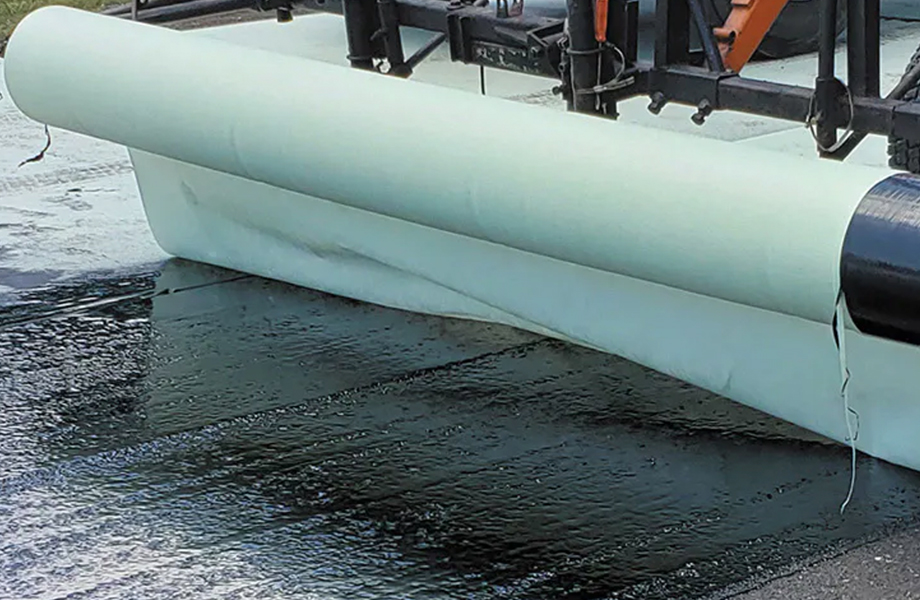
Asphalt interlayers can help delay or prevent reflective cracking by providing a stop-gap between the asphalt and the underlying layers to absorb stresses of propagating cracks that threaten to creep up into the wearing course. Asphalt interlayers are made of geosynthetic products, such as geotextile fabrics or polymeric geogrids, which allow for slight movements while still resisting cracking. They form a stress-absorbing membrane to increase pavement fatigue life and retard reflective cracking. Ultimately, interlayers increase the amount of traffic a pavement section can withstand, serving to optimize your budget by stretching maintenance cycles. By using pavement interlayers, engineers can help to extend the life of asphalt pavements and delay the need for costly repairs. Asphalt interlayers also provide a moisture barrier to stop surface water from entering the road base.
Any paving interlayer that uses an asphalt binder to install the product (Paving Fabrics, Paving Mats or Composite Grids), or has asphalt binder included in the product (Peel and Stick Products), are able to provide some form of moisture barrier. Currently, any paving interlayer that uses 0.20 gal/sy of asphalt binder or more to install the interlayer is considered to provide a moisture barrier that will work irrespective of the overlying crack that develops.
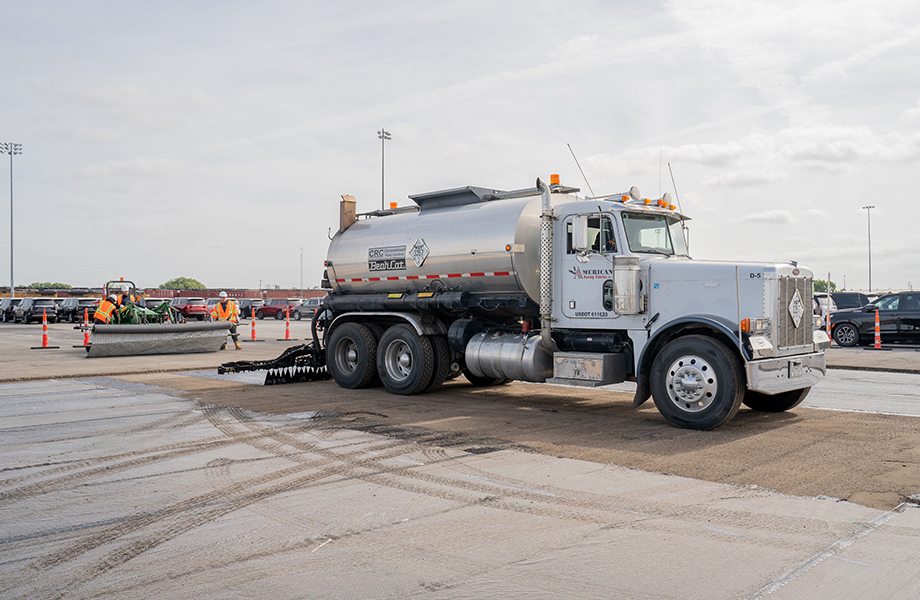
From the name moisture barrier, it is apparent that when used within pavement layers, a horizontal moisture barrier restricts the vertical movement of water - the biggest threat to pavements. Pavements are typically designed with bound layers on the surface and these layers sit on top of unbound granular layers or soils. The structural unbound layers are typically free draining, but if exposed to wetting, will fail to support the overlying layers, leading to premature failure. Lastly, the moisture barrier benefit can be achieved simultaneously with either the reflective crack function or traffic improvement function.
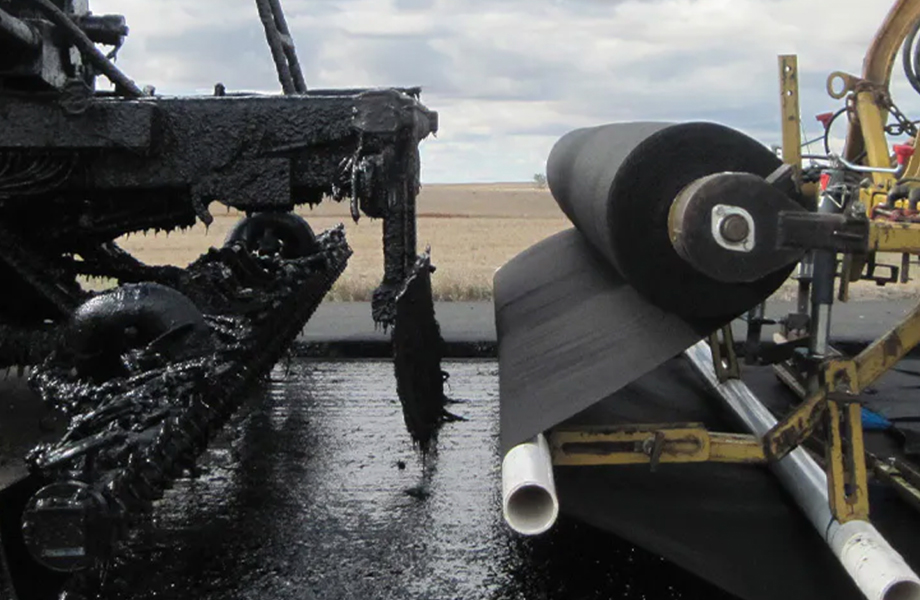
A paving interlayer is a far more effective bottom-up moisture barrier, than a top-down
moisture barrier. The interlayer moisture barrier is installed full width, and therefore, the barrier is always in place, whenever or wherever the crack will appear. Another benefit of the interlayer moisture barrier is that it is positioned below the surface, and therefore not exposed to oxidative distress or UV aging, so is likely to perform over multiple rehabilitation cycles. One could consider this a proactive moisture barrier approach, whereas the crack sealing is more reactive.
A moisture barrier will typically slow down the rate of any flexible pavement deterioration. This is because a crack with a moisture barrier beneath it will minimize and mostly prevent the development of structural distress along the length of the crack. A moisture barrier will reduce the severity of any cracks caused by volumetric changes in fine-grained soils by minimizing the flow of water into and out of these soils at the cracks. Using a moisture barrier will also significantly reduce the amount of localized patching required on your next rehabilitation or mill and overlay project.
Lastly, the asphalt binder saturated paving interlayer is typically used close to the pavement surface, and so will experience a certain amount of compressive stress, which is useful in helping to knead the asphalt liquid, and in some cases will reheal and remold the asphalt binder within the fabric – restoring any thinning of the moisture barrier. Following the evaluation of field projects by Caltrans, the FHWA recognized the value of a moisture barrier, and suggested that if you use a moisture barrier within your rehabilitation design, it is equivalent in performance to adding 1.2 inches of asphalt to your new overlay.
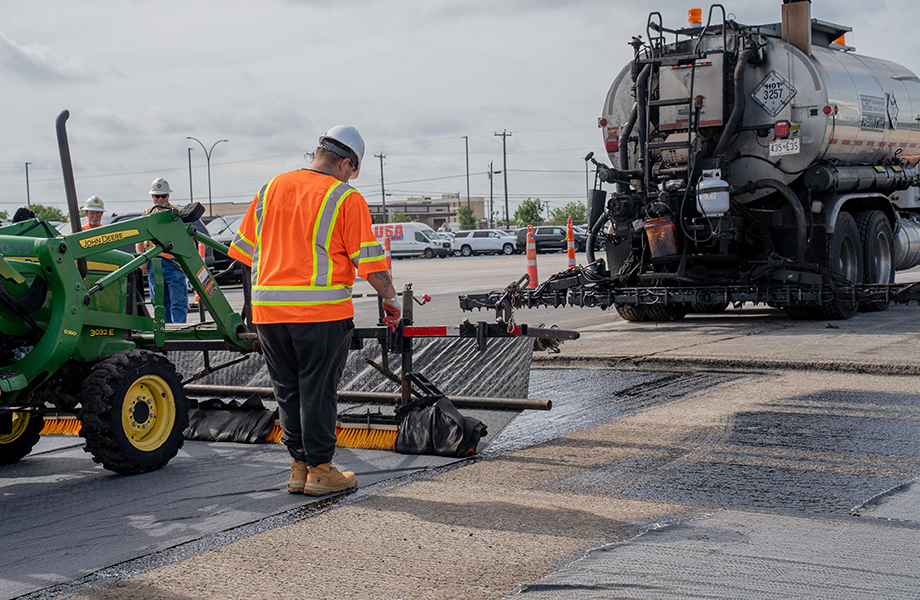
When selecting an asphalt interlayer for your project, it is crucial to consider the climate, traffic conditions, and type of pavement distress. Interlayers that are too thin may not provide enough protection, while those too thick can make the pavement too stiff and prone to damage. The thickness of the interlayer should be based on the specific needs of your project. Interlayers take many forms, with each suited to best address a mixed bag of needs for your unique project. Learn more about choosing the right interlayer for your next job Here.
Reflective cracking and moisture within pavements are problems because they can lead to premature pavement failure. By using asphalt interlayers, you can mitigate reflective cracking, improve drainage, and extend the life of your pavement. We've provided some information about the benefits of using asphalt interlayers, but we understand that it can be challenging to know which product is best for your project. That's why we offer a free project evaluation service. Let us look at your specific situation and recommend the best asphalt interlayer for your needs. Avoiding the quick deterioration of pavements is essential for the safety of drivers and pedestrians, so don't wait – submit your free project evaluation today!
Always be the first to know about new products, resources, and tools that impact our industry and your performance.
Download our free PDF resource to identify how Tensar InterAx Geogrid can reduce cost and install time while improving your subgrade stabilization design's life and performance.
